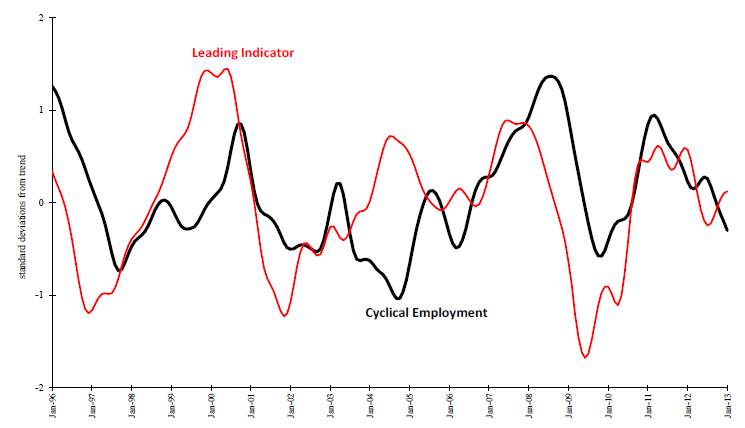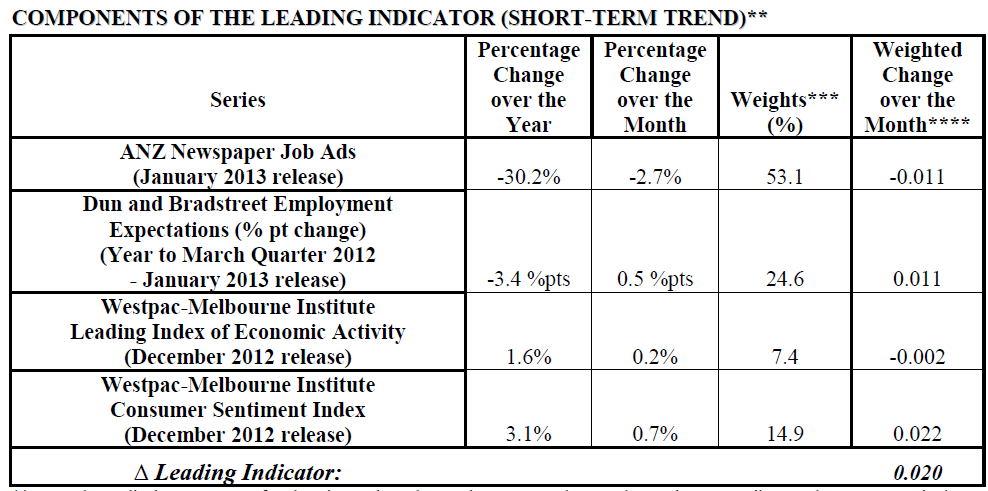DEEWR publishes a monthly leading indicator of employment trends which has a decent forecasting record. It rose today for the sixth month in a row:

Here’s what DEEWR says:
DEEWR’s Monthly Leading Indicator of Employment (Indicator) has risen for the sixth consecutive month in January 2013, after falling for seven consecutive months previously. A quickening in the pace of employment growth to above its long-term trend rate of 1.6 per cent per annum is now technically in prospect, because the Indicator has risen for the minimum of six consecutive months required to confirm that the indicator reached a trough in July 2012. However the Indicator seems to be decelerating. Cyclical employment has fallen for seven consecutive months since June 2012.
Hmmm, well, it’s possible. There were hints in the last ANZ job series release that WA and QLD job shedding had eased. I still agree with consensus, however, that unemployment is likely to rise this year toward 6%, though it might take until next year. The internals of the DEEWR indicator are as follows:

We can pinpoint at least some distortion here in the use of Westpac’s terrible leading indicator which has failed to predict the sun rising for the past two years owing to its dated biases towards the US economy. There is also the use of the consumer confidence measure which, given growth has not been driven much by consumers, will be giving a false positive.
I do not know what the forecasting record for the Dun and Bradstreet measure is.
In conclusion, there are some reasons to argue that the DEEWR indicator may have lost its way in this atypical cycle as other marginal indicators suggest. But I wouldn’t bet my life on it, especially since the the official unemployment number has a habit of falling on a declining participation rate.

